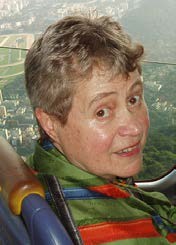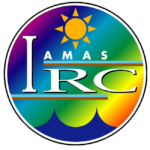
Prof. Dr. Karin Labitzke, retired professor for Mete-orology at the Freie Universität Berlin (FUB), passed away on 15th November 2015 at the age of 80 years.
Karin Labitzke studied at the Institut of Meteorology at the Freie Universität Berlin. After completing her PhD in 1962 on Contributions to the synoptic mete- orology of the high stratosphere (in German), she worked with her teacher and mentor, professor Richard Scherhag, who discovered the stratospheric warmings. She made her first international contacts at the groundbreaking international Symposium on Stratospheric and Mesospheric Circulation in Berlin in 1962. A number of extended research visits at the National Center for Atmospheric Research (NCAR) in Boulder/Colorado (USA) followed. In 1969, she completed her habilitation from the Freie Universität Berlin. After the early death of professor Scherhag in 1970 she took over leadership of the stratospheric research group in Berlin and established a successful and internationally renowned research group until her retirement in the year 2000.
Karin Labitzke’s scientific interest was always focused on the stratosphere. For her investigations she used daily stratospheric analyses of the northern hemisphere, which meteorologists in her own research group have prepared since the mid-1950s from radiosonde soundings (later complemented with satellite data). These hand-analysed stratospheric maps have long served as a reference for computer analyses of weather centers and formed part of the first reference climatology of the middle atmosphere, the Cospar International Reference Atmosphere (CIRA). At workshops, Karin Labitzke used to emphasize that unexpected extreme temperatures in the winter stratosphere were not outliers of computer programs but the result of stratospheric warmings. Another important application of the stratospheric analyses was the production and distribution of STRATALERT messages, mandated by the WMO. These reports about the stratospheric dynamics during northern hemisphere winter were also used to advise measurement campaigns in the Arctic.
Since the 1960s, Karin Labitzke worked on a number of open issues that are still part of ongoing research, such as the interaction between the stratosphere and the troposphere. Through her methodological approach, i.e. to identify unknown phenomena and connections in the stratosphere with the help of observational data, she animated theoreticians and modelers to look for explanations. She also established a modeling unit within her own research group. The motto was: “A model is only good if it reproduces the observations correctly”.
An outstanding topic of Karin Labitzke’s research were the sudden stratospheric warmings during Northern hemisphere winter. She showed for example that polar temperatures vary a lot in the winter stratosphere: in years with stratospheric warmings, the monthly mean temperature in January/ February at 30hPa at the Pole could reach -55°C, whereas during cold winters temperatures would be around – 75°C.
A milestone of stratospheric dynamical research was Karin Labitzke’s finding of a relation between the occurrence of stratospheric warmings, the QBO at the equator and the phase of the 11-year solar cycle. She published her discovery for the first time in 1987, together with her colleague and close friend Harry van Loon from NCAR. While they were initially criticized by a number of colleagues, this relationship has since been convincingly proven to be robust and is nowadays established. Altogether, the research activities of Karin Labitzke can be found in more than 250 publications, and her book The Stratosphere is a popular source of knowledge for PhD students.
Besides her own research, Karin Labitzke was always engaged in committees, among others she led the Committee on Space Research, was part of the Scientific Committee of Solar and Terrestrial Physics as well as member of the German Advisory Council on Global Change. Between 1991 and 1993, she was the first female chair of the German Meteorological Society. During her term she successfully reunified the two German societies.
By effective third-party fundraising Karin Labitzke attracted many young scientists whom she supported with a great deal of enthusiasm. She served as a role- model for female scientists which resulted in a constant high proportion of women in her group.
Many people knew and appreciated Karin Labitzke as a colleague, teacher, mentor, and friend. We will always cherish our memories of her.
Obituary from: http://www.geo.fu-berlin.de/en/met/sharp/news/Obituary_Karin_Labitzke.pdf
